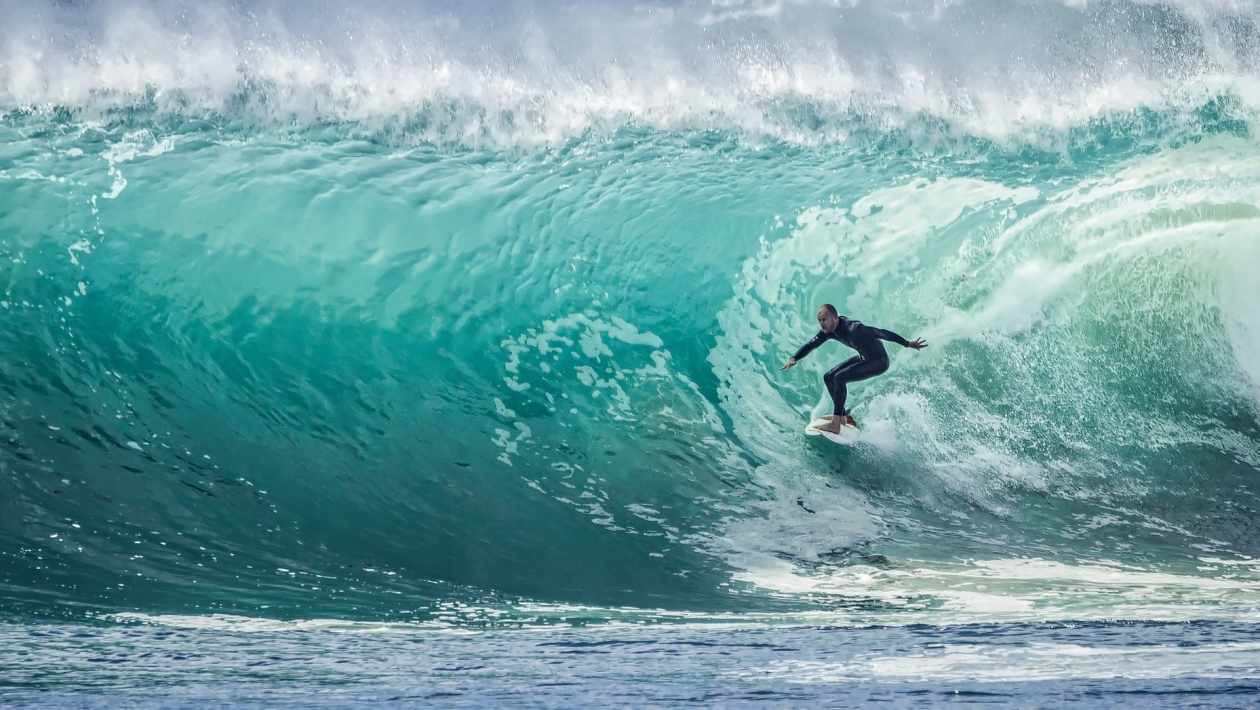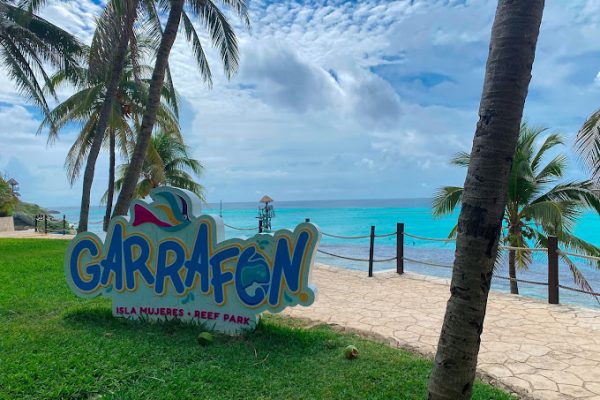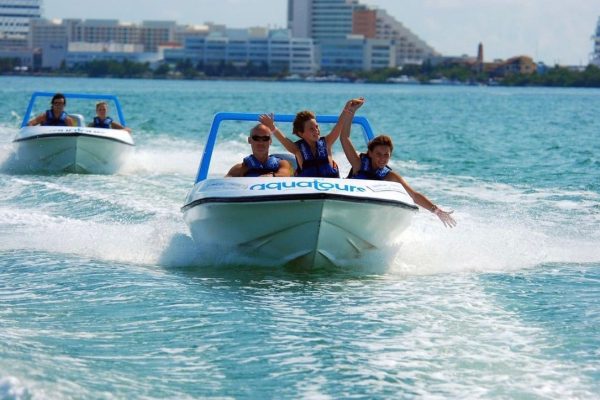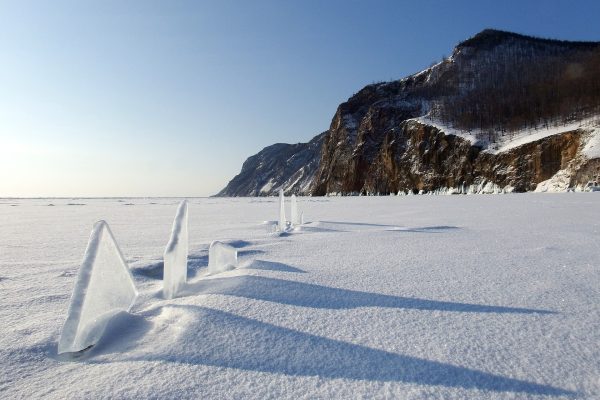You’ve probably come here because you have discovered how many distinct types of surfboards there are. While people surfed atop long, flat slabs of wood, things were a lot easier, but today’s beaches have a vast range of surfboard material, forms, and lengths.
When you have never surfed before, check out our suggestions. In addition, we’ve put up an analysis of the most popular types of surfboards, whether you want to add new surfboards to the lineup or wish to learn as much about the many varieties of surfboards.
Table of Contents
Types of Surfboards
1. PShortboard 5′-7′
A shortboard is required if you’d like to perform some pretty spectacular acrobatic tricks on the head of a wave. The sharp noses and narrow rails on these limited boards offer you the finest turning abilities.
A shortboard gives you greater control than just about any other surfboard type when it comes to maneuvering around the wave.
This shortboard has one major disadvantage: learning to surf is difficult, and it is often only advised for intermediate & experienced surfers.
Because the shortboard’s limited volume, narrow rails, and pointed tip make it difficult to paddle and balance, novice surfers should master the basics on a hoverboard before converting to a shortboard.
- Average board length– 3’-8’
- Board Shape– They have an upturned tip
- Fin Set-up– This type of board uses single Fin
2. Fish Board
Shortboards are fantastic for riding quick, strong waves, but they struggle when not quite as good. The fish board will help you grab a lot more waves whenever the surf is sluggish and tiny.
Fish surfboards receive their moniker from the notched tail that looks like a fish. They’re typically the same height as the shortboard, but they’re broader and thicker for more volume.
You do not even need to be as experienced to ride a fish board because it’s more stable and simpler to paddles than a shortboard, but we still suggest it for intermediate or advanced surfers.
Many people think fish boards as good for little, sluggish waves, but they’re just as great fun in bigger ones. A fish is ideal for a more relaxing ride on huge waves that don’t need much cutting.
Similarly, in the realm of healthcare, finding the right medication for specific conditions can be analogous to choosing the appropriate surfboard for different wave conditions. Just as a fish board is versatile for various surfing scenarios, Jardiance Generic is seen as a flexible and effective option for managing certain health conditions, like diabetes. This medication offers an accessible and potentially more affordable alternative, much like the fish surfboard provides an adaptable choice for surfers of different skill levels.
- Average board length– 5’-6’6
- Board Shape– Looks like the tail of a fish
- Fin Set-up– This type of board uses twin fins
3. Longboard
Every surfer should own a longboard. They’re suitable for people of all ages and abilities, and they provide some benefits over smaller boards.
Longboards are the most convenient to paddle, the steadiest, and the most capable of catching waves.
You will be able to grab waves earlier and ride them faster than anybody on a surfboard because of the increased volume and surface area. With the longboard, you can surf even whenever the waves barely go over your ankles.
- Average board length– 9’
- Board Shape– generally has the traditional surfboard shape
- Fin Set-up-This type of board Single fin
4. Funboard
Such surfboards are midway between a shortboard and a longboard in length, combining the finest features of both designs.
Funboards exist in a range of widths, densities, and nose forms, but the majority of them are built for stability and simplicity of usage.
Funboards are the ideal board for beginners who are transitioning from longboarding to short boarding.
Many individuals will switch from the longboard to the shortboard right away, but the learning process may be high and unpleasant due to the drastic difference. Enjoy riding a funboard for the time if you’re having difficulties converting to a shortboard.
They have enough mobility to make bottom turns while being stable enough not to wipe out all the time you attempt.
- Average board length– 6’-8’
- Board Shape– tail shape, nose shape
- Fin Set-up-This type of board uses five-fin
5. Gun board
You’re not able for a gun if it is the first to replace the older one. Only experienced and expert surfers should use guns. They’re created specifically for surfing on enormous, strong waves that you’d be foolish to try to the surfer as a beginner, not just they’re more difficult to operate.
Even as a pro, you need to be somewhat insane to ride those types of waves. Longer than longboards, guns have a pointed nose and tail for better maneuverability.
When surfing a huge wave, you want as much pressure as possible since even a minor mistake might result in serious harm. To cut through the water, guns are broad and hefty.
- Average board length– 6’6-10
- Board Shape– Thin needle-nosed shape
- Fin Set-up– This type of board uses Five-fin
6. The Shortboard
Shortboards are now the most common surfboard shape in the world. If you go to a famous surfing site, you’ll see that 95% of the riders are using boards that are between 5’5″ & 6’5″ in length.
A shortboard is more difficult to sail than a longboard, although it is simpler to duck dive. Shortboards are also simpler to turn and react swiftly in key times and wave portions. The thrusters (tri-fin) system is the most prevalent fin configuration in shortboards.
- Average board length– 7’
- Board Shape– sharp nose shape
- Fin Set-up– This type of board uses Single fin
7. The Longboard
A longboard was the first board of the contemporary age. Longboards, as the name implies, are lengthy surfboards.
Longboards have a curved or flat nose, lots of front width, and broad tails but are generally over 9′ in length. These are highly buoyant and also have a bunch of foam volume.
As a consequence, they’re simple to paddle, and they will swiftly penetrate any wave. Longboards are ideal for surfing tiny waves since they plan well in messy summer conditions.
These are stable and can be surfed on the tip, but turning them is tough and sluggish. They do, however, represent a surfing tradition and a message.
- Average board length– 8’-12’
- Board Shape– they have the traditional surfboard shape
- Fin Set-up-This type of board uses Single fin
8. The fish
Shortboards are comparable to fish surfboards, except they are broader from tip to tail and shorter. The level well and create a lot of speed on small-to-medium waves due to their width & low rocker. These tiny, quick surfboards have a fish-inspired fin and thus are usually surfed with twin fins.
- Average board length– 5’-6’6
- Board Shape– tail shape
- Fin Set-up– This type of board uses twin fin
9. The Funboard/Malibu
A funboard, sometimes known as a malibu, is a hybrid of a longboard and a shortboard. They’re a popular choice among both beginners and experienced surfers.
Still, they might be a backup choice for experienced riders who love having fun in small summer circumstances. Malibus are forgiving boards in ankle-to-waist height waves and generally vary from 6′ to 8′ in length.
- Average board length– 6’-8’
- Board Shape– they are nose shaped generally
- Fin Set-up– This type of board uses five- five-fin setup.
10. The Gun
Large shortboards built for difficult surfing situations are known as guns. Pat Curren, the founder of large wave surfing, is largely regarded as the inventor of the pistol. He was one of the first surfers to take on Hawaii’s Waimea Bay.
Large wave guns are simple to paddle, and they will enter a large wave quickly, but they are difficult to turn due to their size. They generally have a pintail and range in length from 7 to 12 feet. The nose of large wave surfing boards is narrow, so thruster fins are commonly used.
- Average board length– 6’6-10’
- Board Shape– needled-nose shape
- Fin Set-up– This type of board uses Five fin setup
Types of Surfboard Tails
While you are diving into the world of surfers and surfboards, you should get to know about the various types of surfboard tails. Here are some of the types of surfboard tails that you should know of.
1. Fish tails
These are some of the very famous types of surfboards. The end of these surfboards has the shape of a fish’s tail. They are also known as swallow surfboards. One can take this type of surfboard to surf in the small waves as well as the big waves.
Pro-
- This is good for speed.
- Fishtail surfboards are good for surfing in the small waves.
Cons-
- These boards are known to get damaged easily.
- It becomes difficult at times to catch waves.
2. The round tail
Many surfers these days go for the round tails. These surfboards are perfect for the steep waves. This type of surfboard gives one better speed as well.
Pro-
- This surfboard tail is extremely suitable for small waves.
- One can make turns in an easier manner in this type of surfboard.
Cons-
- If you love to take the waves in a fast and speed manner, this board is not for you.
3. The Pin tail
Surfers who love seeking adventures and love to surf in the big waves should opt for the pin tail surfboards. These surfboards are not made for small waves and might cause problems.
Pros-
- This surfboard is very good for large waves.
- This surfboard is known for providing good speed, making it in demand.
Cons-
- This type of surfboard is not suitable for small waves.
- This type of surfboard can be risky for beginners.
4. The square tail
This can be considered as a favorite of the surfers. This surfboard is known to give great stability which makes people choose it. It fits better in the small waves.
Pros-
- The square tail surfboards are known to give you much more stability than the other ones.
- One can change direction in an easier way.
Cons-
- The sad fact about this square-tail surfboard is that it is not meant for large waves.
5. The squash tail
This is one of the most common tails that you will see when you look around at surfers. This tail is a mixture of the square and the pin tails and gives a good look. This is good for all wave types making it extremely preferable and in-demand as well.
Pros-
- This surfboard is good for quick and sharp turns.
Cons-
- A person who is experienced enough can only handle the tail better.
Types of Surfboard materials
In your next stoppage, let’s get you down to knowing some of the surfboard materials. If you have detailed knowledge of what you are getting into, you are determined to get the best results.
-
Wood
This must be known by many, as wooden surfboards are one of the most known surfboards available in the market. Wooden surfboards are also known to be eco-friendly and they are strong as well. They will help you survive the tough waves as well.
Pros-
- They are eco-friendly to the environment.
- They are durable and can be used for a long time.
Cons-
- They are heavier than the other materials making it difficult during the turns.
2. Polyester
Most of the surfboards today are made of polyester. Polyester surfboards are known to have been in demand. Thus, if one chooses to buy a polyester surfboard, one should invest a good amount of money in order to get good quality.
Pros-
- These surfboards are known to be durable.
- They are not very costly making it easy for people to buy.
Cons-
- The polyester doesn’t stay good for a long time and starts to change after a year.
- Polyester isn’t eco-friendly.
3. Epoxy Resin
Surfboards made of epoxy resin have been known to have greater stability and they last a long time as well. People love things that are durable so that they don’t need to invest money every time a minor thing happens.
Pros-
- They are known for their durability.
- They are very lightweight.
Cons-
- They don’t have good stability.
4. Soft-top
These surfboards are generally good for beginners. They are made of fibreglass generally and new surfers generally go for this board. Surfboards made of soft-top are very good for the small waves as well.
Pros-
- They are very less pricey making it affordable for people with a tight budget and good passion for surfing.
- They are known to be the perfect surfboard for the beginners.
Cons-
- This is not durable at all, and one might need to change within months if used in sea with high waves.
Conclusion
Did you check all the types of surfboards? Which one would you like? It is time you buy the best surfboard and start your surfing journey. Try to buy it from a physical store to get a detailed idea about the user experience. Also, ensure getting a product that is meant for beginners of your size.
Frequently Asked Questions
Q1. Are there different types of surfboards?
Yes. There are different types of surfboards including Fish Board, Longboard, Short Board, Fun Board, and Gun Board.
Q2. What is a 7 foot surfboard called?
The mid-length board also called the Mini Mal surfboard is 7 foot long. It is smaller than long board and perfect for beginners.
Q3. How big is the biggest surfboard?
The Orange County 42-foot long surfboard has the record of being the largest with 47 people aboard by the Huntington Beach, California.
Q4. What is the longest surf time?
40 hours is the longest surf time set by Blake Johnston in Sydney for a charitable cause to raise thousands of dollars for children’s mental health.




